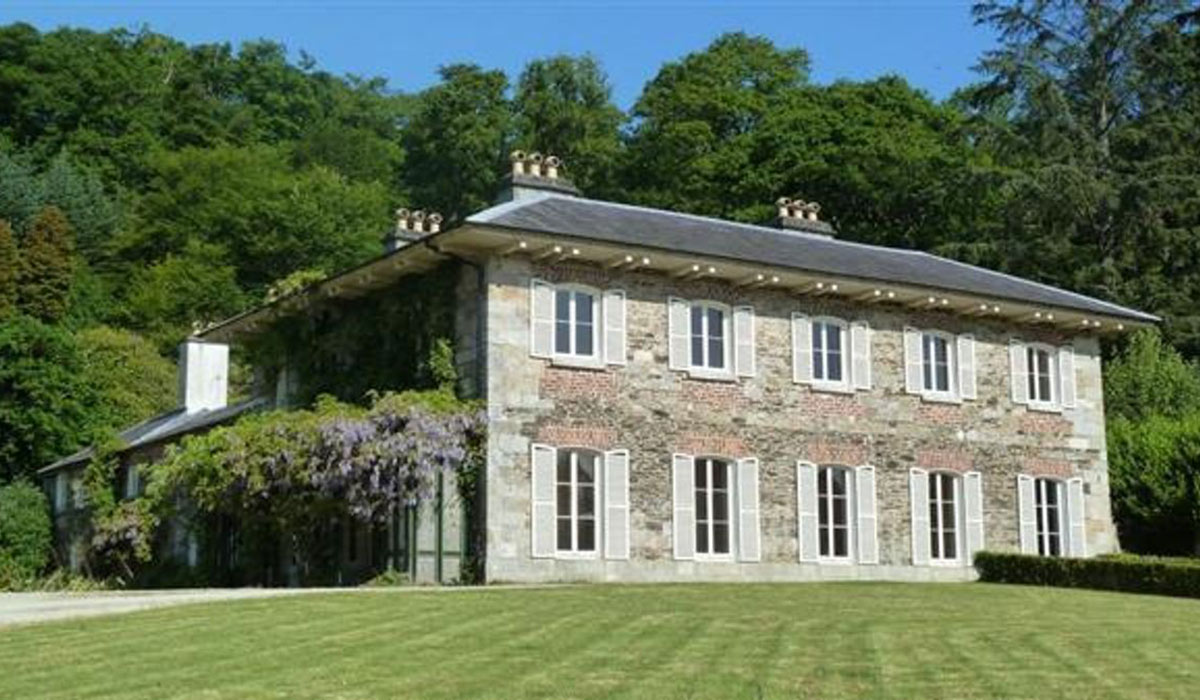A woman who spent more than €5million restoring an Italian-style villa in Co. Wicklow has been awarded damages against her architect.
The case revolved around defective mortar used to restore a kilometre-long wall that runs around the mansion’s orchard.
In 2013, Aysar Barbouti had bought Derrybawn House, a two-storey mansion overlooking Glendalough in Co. Wicklow.

Derrybawn, which dates back to 1780, sits on approximately 100 acres and is constructed around a paved and walled courtyard.
It had been purchased after an investment company that owned the property had been liquidated during the financial collapse, having spent millions restoring the building.
The main issue in the case related to the mortar used while repairing a lengthy section of the stone walls which surrounded the orchard.

High Court judge Siobhán Stack said that the contractor accepted that the mortar had not been correctly mixed, but Ms Barbouti claimed her architect, David Gilligan, should have noted the defects.
He denied this, and said she had terminated his contract in December 2017 before the defects became apparent. Building work had ceased in August that year, the judge said, after Ms Barbouti had dismissed the contractor, Kiernan Homes.
Judge Stack ruled that Mr Gilligan should be held responsible for 50% of the cost of repairing a defect in the ‘haunching’ or capping of the historic walls, for which an exact value has yet to be estimated.

The judge also said that Mr Gilligan had accepted liability for that issue, which saw the stones become loose as they were not properly set.
She said Mr Gilligan was also fully liable for remedying admitted defects in the foundation for a warehouse, which he designed, to the value of €35,000 to €40,000.
However, she said he was not liable for defects in the mortar used in the historic walls, as this was not visible at the time.
Judge Stack added that Ms Barbouti had been unreasonable in seeking to sue Mr Gilligan, when she had dismissed him and prevented him from carrying out further inspections of the property. A decision about who will foot the legal bill for the case, which ran for 28 days, has yet to be made.
Judge Stack noted: ‘Although [the house] had apparently been renovated in the mid-2000s, by the time Ms Barbouti purchased it in 2013, it had been vacant since 2008, and had been subject to significant water ingress through the roof, resulting in damage to the interior of the house.
‘The wooden floors had swollen and buckled, and it was anticipated that the electrics needed to be made safe.’
Kiernan Homes was appointed to carry out an extensive refurbishment of the interior of the house, the repair of the historic perimeter walls and the construction of a tiered, several-acre walled garden, known as the Orchard, as well as other works around the estate.
In the judgment, issued in August but published by the courts service yesterday, Judge Stack said the High Court proceedings originally commenced as a claim Kiernan Homes took against Ms Barbouti for payment for the sum of €1.4million plus VAT, said to be due and owing for the works.
Ms Barbouti, in her defence, denied that the sum was due, essentially claiming that she had been overcharged – and she also counterclaimed for compensation for defects in the works carried out by the contractor, the judge said. That case was settled after four days, but the proceedings continued with a claim by Ms Barbouti against Mr Gilligan of Gilligan Architects Ltd.
Judge Stack said Ms Barbouti had spent over €5million on renovations to the property, but there was never a written building contract in place.
He also said Ms Barbouti would give instructions on a rolling, ad-hoc basis.
‘Throughout the works, Ms Barbouti was caring for her mother in London, so she would travel to Derrybawn House by means of an early flight, spend the day at the property, and return to London that evening,’ she said.
The judge said Ms Barbouti was said to have been very hands-on, and to have had a good eye for detail. She expected highquality finishes and a high standard of work, but the timetable could be ‘erratic and unpredictable’, the judge noted, and the architect managed as best he could in the circumstances.




